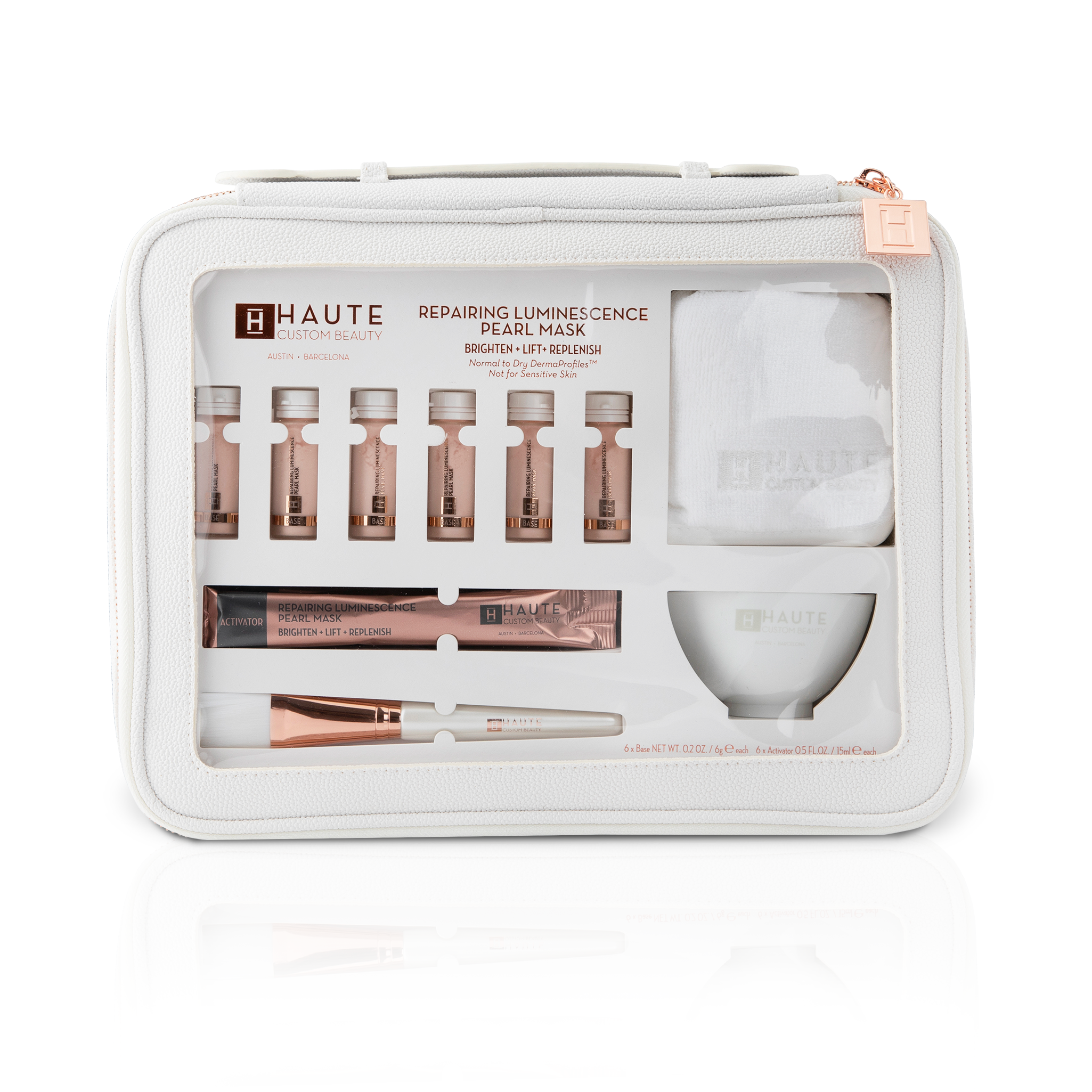What Is Not Ideal For Combination Skin?
Last Updated on June 18, 2025 by Jaclyn A. Neeley
Not ideal for combination skin are heavy and greasy skincare products. Combination skin tends to have oily and dry areas, requiring a balance of moisture without excess oil.
Skincare products that contain heavy oils or are too rich can further clog pores and exacerbate oiliness, while products lacking in moisture can lead to dry patches. Achieving the right balance for combination skin involves using lightweight, non-comedogenic (non-pore-clogging) products that provide hydration without weighing down the skin or adding excess shine.
Finding the right products and adjusting your skincare routine accordingly is key to maintaining a healthy and balanced complexion for combination skin.
Combination Skin
Combination skin can be a tricky skin type to deal with. It often feels like it has a split personality, with some areas being oily while others are dry or normal. This can make finding the right skincare routine a bit challenging. To help you navigate the world of combination skin, let’s take a closer look at what it is and the common characteristics associated with it.
What Is Combination Skin?
Combination skin is characterized by having both oily and dry areas on the face. Typically, the T-zone area (forehead, nose, and chin) tends to be oily, while the cheeks and other areas may be normal or dry. This can result in a variety of skincare concerns, such as excessive oiliness, enlarged pores, blackheads, dry patches, and even occasional breakouts. It requires a delicate balance of products that address both the oily and dry areas.
Characteristics Of Combination Skin
Understanding the characteristics of combination skin is essential in determining the most suitable skincare routine. Here are the primary characteristics to look out for:
- Oily T-zone: The T-zone, which includes the forehead, nose, and chin, tends to produce excess oil, making it shiny and prone to clogged pores.
- Dry or normal cheeks: The areas outside of the T-zone, particularly the cheeks, may have normal or dry skin, lacking the excess oil production seen in the T-zone.
- Enlarged pores: Combination skin often includes enlarged pores, especially around the nose and forehead, due to the excess oil production in those areas.
- Occasional breakouts: While not always the case, combination skin can be prone to occasional breakouts, mainly in the oily T-zone.
- Uneven texture: Combination skin may have an uneven texture due to the contrast between oily and dry areas.
Understanding these characteristics allows you to choose skincare products and develop a routine that specifically targets your combination skin’s unique needs.
Now that you have a better understanding of what combination skin is and its common characteristics, it’s important to know what skincare practices may not be ideal for this skin type. To keep your combination skin balanced and healthy, let’s explore what you should avoid.

Credit: hautecustombeauty.com
Factors That Can Aggravate Combination Skin
Certain factors can exacerbate combination skin, including excessive sun exposure, harsh cleansers, and using heavy, pore-clogging moisturizers. Proper skincare routine with gentle products is essential for maintaining a healthy balance.
Harsh and Stripping Cleansers
Using harsh and stripping cleansers can be particularly detrimental to combination skin. These types of cleansers are often formulated with strong ingredients, such as sulfates or alcohol, that can strip the skin of its natural oils. While this may seem helpful for combating excess oil in the T-zone, it can cause the skin to overcompensate by producing even more oil, leading to an oily T-zone and drier patches on the rest of the face.
Over-Exfoliation
Exfoliation is an important step in any skincare routine, but overdoing it can have adverse effects, especially for combination skin. Over-exfoliating can disrupt the skin’s balance, leading to increased oil production in the T-zone and dryness in other areas. It is recommended to exfoliate the skin no more than two to three times a week, using gentle exfoliants that won’t cause irritation or stripping of the skin.
Heavy and Greasy Moisturizers
When it comes to moisturizers, it’s crucial to choose one that won’t weigh down the skin or contribute to excess oiliness. Heavy and greasy moisturizers can clog pores and exacerbate oiliness, particularly in the T-zone. Opt for lightweight, oil-free, or gel-based moisturizers that provide hydration without leaving a greasy residue. These types of moisturizers are better suited for combination skin as they help to balance moisture levels throughout the face.
Incorporating these considerations into your skincare routine can help to alleviate some of the challenges associated with combination skin. By avoiding harsh and stripping cleansers, being mindful of exfoliation frequency, and opting for lightweight moisturizers, you can maintain a healthy balance and support the overall health of your skin. Remember, everyone’s skin is unique, so it may take some trial and error to find the perfect products that work for you.
Ingredients To Avoid For Combination Skin
When it comes to taking care of combination skin, it’s important to know what ingredients to avoid. Certain substances can exacerbate the already delicate balance of oily and dry areas, leading to more problems like breakouts, irritation, and dryness. To keep your combination skin looking its best, steer clear of the following:
Alcohol-based Products
Alcohol is a common ingredient found in many skincare products due to its ability to quickly evaporate, giving a mattifying effect. However, for combination skin, it can be more harmful than helpful. Alcohol-based products tend to strip away the skin’s natural oils and disrupt the delicate oil-water balance. This can cause the skin to produce even more oil to compensate, leading to an oily T-zone and dry cheeks and other areas. To maintain equilibrium, be sure to avoid skincare products containing alcohol.
Fragrances And Artificial Colors
Fragrances and artificial colors may add a pleasant scent or aesthetic appeal to skincare products, but they can be problematic for combination skin. These additives are potential irritants that can trigger allergic reactions and sensitivity, causing redness and inflammation. Furthermore, artificial colors can clog pores and worsen breakouts. When selecting skincare items, opt for fragrance-free and color-free options to help keep your combination skin calm and clear.
Essential Oils
While essential oils have gained popularity in the beauty world for their natural properties, they can be problematic for combination skin. Certain essential oils, like lavender and citronella, have the potential to disrupt the skin’s natural balance. They may be too heavy for oily areas, resulting in clogged pores and breakouts, while also exacerbating dryness in other parts of the face. It’s best to avoid skincare products that contain essential oils or opt for formulations specifically designed for combination skin.
Certain Acids
Although some acids can be beneficial for skincare, certain types may not be ideal for combination skin. For instance, potent exfoliating acids like glycolic acid or salicylic acid can be too harsh and irritating for already sensitive areas. They can strip away moisture, leading to dryness and flakiness, while also disrupting the natural balance of oil production. If you have combination skin, it’s advisable to consult with a dermatologist to determine which acids are suitable for your specific skin concerns.
Irritating And Comedogenic Ingredients
Some skincare ingredients have the potential to irritate the skin and clog pores, making them unsuitable for combination skin. Examples of these ingredients include lanolin, mineral oil, and certain silicones. Lanolin, often found in moisturizers, can be too heavy and occlusive for oily areas, while mineral oil and certain silicones can exacerbate breakouts. It’s best to check the ingredient labels and avoid products containing these substances to maintain a healthy balance for your combination skin.

Credit: www.amazon.com
Basic Skincare Routine For Combination Skin
Combination skin requires a skincare routine that avoids over-drying or over-moisturizing. It is not ideal to use heavy, oil-based products or harsh exfoliants, as they can cause imbalances and breakouts.
Combination skin comes with its own set of challenges. Oily and dry areas on the same face can be troublesome to deal with when it comes to finding the right skincare routine. However, with the right products and approach, achieving balance and healthy-looking skin is possible.
Cleansing
Cleansing is the foundation of any skincare routine, especially for combination skin. It is essential to choose a gentle cleanser that effectively removes dirt, oil, and impurities without stripping the skin of its natural moisture. Look for a cleanser specifically formulated for combination skin that will address both oily and dry areas.
When cleansing your face, use lukewarm water to help open up your pores and enable the cleanser to penetrate deeper. Gently massage the cleanser onto your face using circular motions to ensure thorough cleansing. Rinse off the cleanser with cool water to help tighten the pores.
Toning
Toning is an important step in any skincare routine, and it plays a crucial role in maintaining the pH balance of your skin. For combination skin, look for a toner that is alcohol-free and suitable for all skin types. Alcohol-free toners will help to hydrate and soothe dry areas while controlling excess oil in the T-zone.
After cleansing, apply toner to a cotton pad and gently swipe it over your face, focusing on the T-zone area. Avoid harsh rubbing, as it can irritate the skin further. Let the toner absorb into the skin before moving onto the next step.
Hydrating
Hydrating the skin is crucial for both oily and dry areas of combination skin. Look for lightweight, water-based moisturizers or hydrating serums that provide the right amount of moisture without clogging pores or making the skin feel greasy.
When applying a hydrating product, dot the product onto your face and gently spread it using upward motions. This will help to maximize absorption and ensure even coverage. Avoid using too much product, as it can overwhelm the skin.
Moisturizing
Moisturizing is essential for maintaining the skin’s moisture barrier and preventing moisture loss. When choosing a moisturizer for combination skin, opt for a non-comedogenic formula that is oil-free and lightweight. Non-comedogenic moisturizers are designed to moisturize without clogging pores or causing breakouts.
After applying your hydrating product, follow up with a moisturizer. Massage it gently into your face using upward motions until fully absorbed. Pay extra attention to dry areas without neglecting the oily areas.
Sun Protection
Sun protection is a non-negotiable step in any skincare routine, regardless of skin type. For combination skin, choose a broad-spectrum sunscreen with at least SPF 30. This will protect your skin from both UVA and UVB rays without leaving a greasy residue.
Apply your sunscreen generously to all exposed areas of your skin, including your face, neck, and any other areas that will be exposed to the sun. Reapply sunscreen every two hours or more frequently if you are sweating or spending extended periods outdoors.
By following this basic skincare routine for combination skin, you can effectively address the specific needs of your skin type, balance oiliness, and provide much-needed hydration to dry areas. Remember to always listen to your skin and make adjustments as needed to achieve optimal results.

Credit: www.amazon.com
Frequently Asked Questions On What Is Not Ideal For Combination Skin?
What Is Not Good For Combination Skin?
Avoid using harsh chemicals, over-cleansing, and skipping moisturizer as they can worsen combination skin. Additionally, using heavy or oil-based products can lead to clogged pores and breakouts. Stick to gentle cleansers, lightweight moisturizers, and non-comedogenic products for a balanced complexion.
What Is Best For Combination Skin?
Best skincare routine for combination skin includes gentle cleansers, oil-free moisturizers, exfoliation with AHAs/BHAs, and sunscreen with broad-spectrum protection. Stay hydrated, use products for balanced hydration, and avoid harsh ingredients that strip the skin.
What Is Not An Ideal Treatment For Dry Skin?
Using hot water for bathing is not an ideal treatment for dry skin. It can strip away natural oils, making the skin even drier.
How Do You Prevent Combination Skin?
To prevent combination skin, follow these steps: 1. Cleanse your face twice a day using a gentle cleanser. 2. Use a moisturizer suitable for combination skin. 3. Avoid touching your face frequently. 4. Stay hydrated by drinking plenty of water.
5. Protect your skin from the sun with sunscreen.
Can I Use Harsh Exfoliators On Combination Skin?
Harsh exfoliators can strip the skin and imbalance oil production, leading to more oiliness and dryness.
Should I Skip Moisturizer For Combination Skin?
Skipping moisturizer can make your skin produce more oil to compensate, resulting in increased breakouts.
Conclusion
When it comes to combination skin, certain skincare practices may not be ideal. While heavy and oily moisturizers can clog pores, harsh exfoliants can lead to irritation. It’s important to steer clear of products containing alcohol and fragrances that can strip the skin’s natural moisture.
By choosing the right gentle cleansers, lightweight moisturizers, and oil-free products, you can achieve a balanced skincare routine to keep combination skin happy and healthy.







